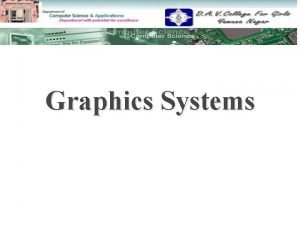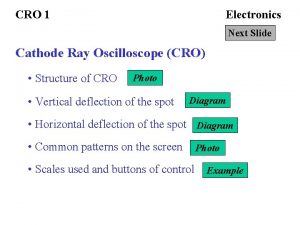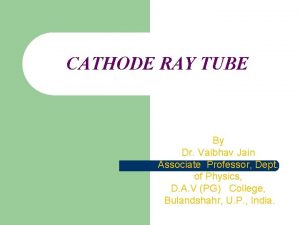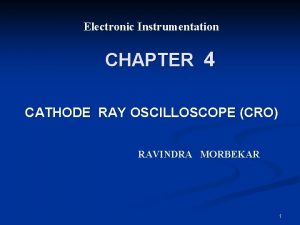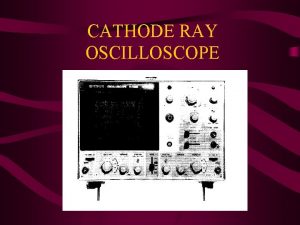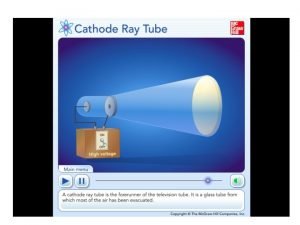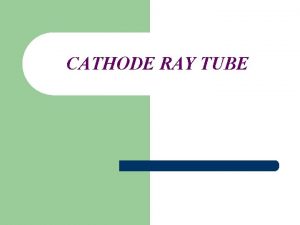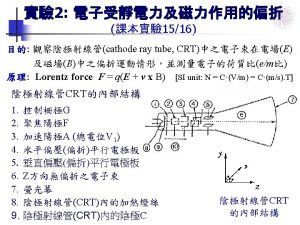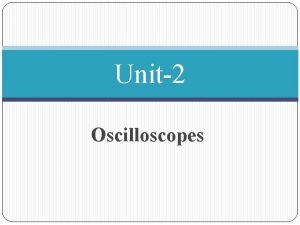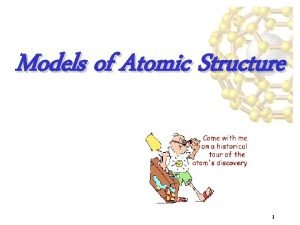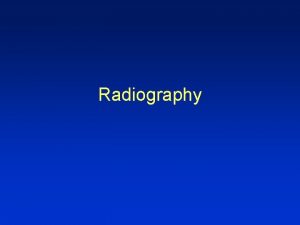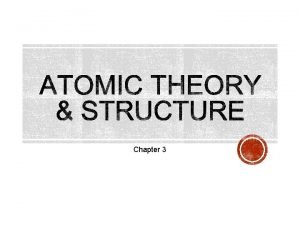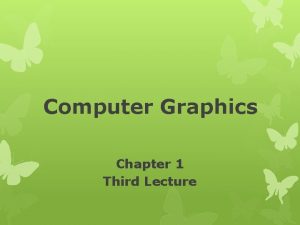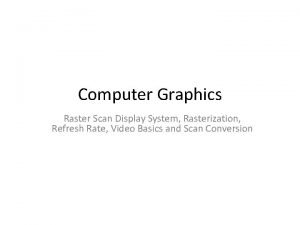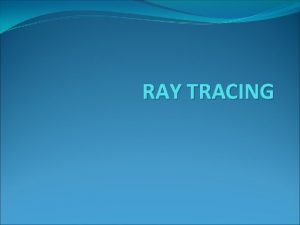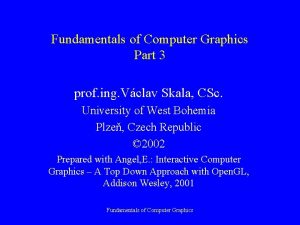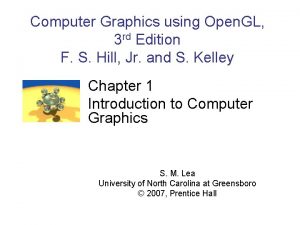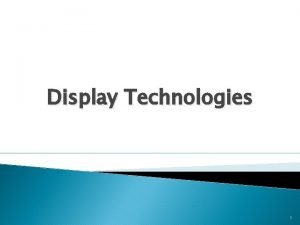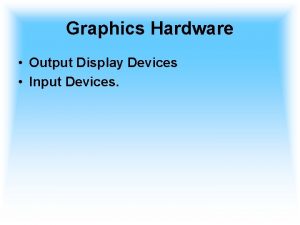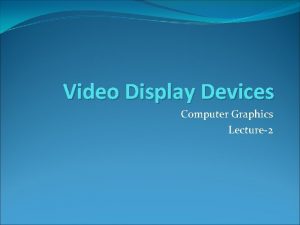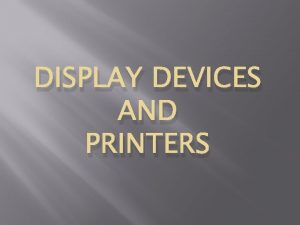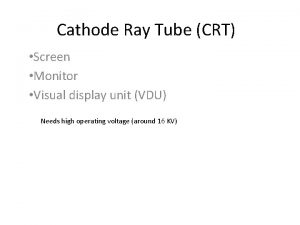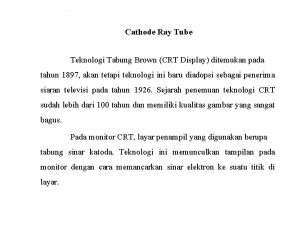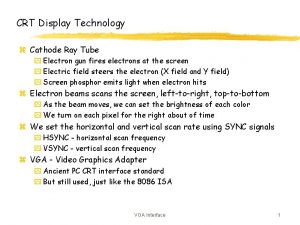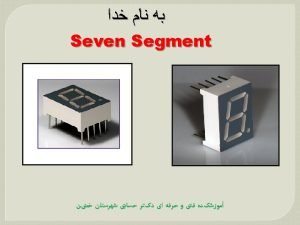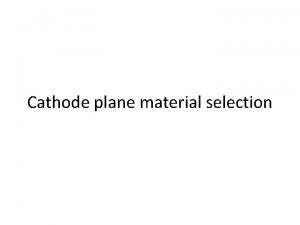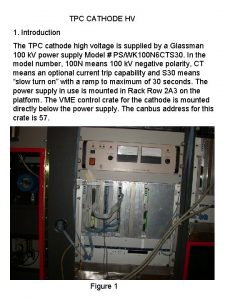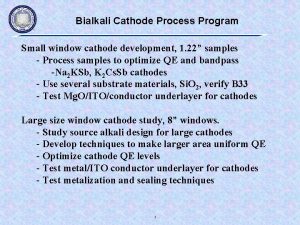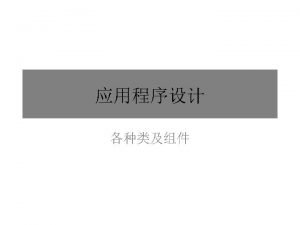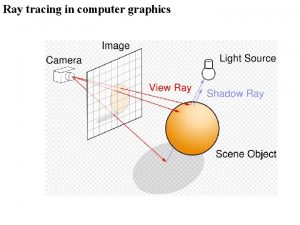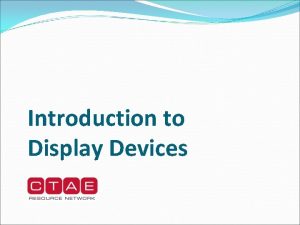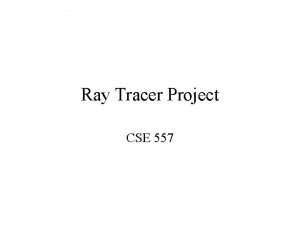Computer Graphics Video Display Devices The Cathode Ray




























- Slides: 28

Computer Graphics Video Display Devices - The Cathode Ray Tube Monitor

What is a Video Display Device A display device is an output device for presentation of information for visual, tactile or auditive reception, acquired, stored, or transmitted in various forms

Types of Video Display Devices Available Cathode Ray Tube Monitors Flat Panel Displays Three Dimensional Viewing Devices Stereoscopic and virtual reality systems

Terminology related to display devices Pixel : A pixel or the picture element is the smallest item of information in an image. Graphic monitors display pictures by dividing the display screen into thousands of pixels arranged in rows and columns. Each image is made up of thousands of small pixels.

Terminology related to display devices Resolution : Resolution is the number of distinct pixels in each dimension that can be displayed. More the resolution more clear is the image.

Terminology related to display devices • Aspect ratio of the image is the ratio of the number of X pixels to the number of Y pixels. • The standard aspect ratio for a PC is 4: 3 • Displaying an image in a different aspect ratio displays the image somewhat distorted that is stretched lengthwise or widthwise. Resolution Number of pixels Aspect Ratio 320 * 200 64, 000 8: 5 640 * 480 307, 200 4: 3 800 * 600 480, 000 4: 3 1024 * 768 786, 432 4: 3 1280 * 1024 1, 310, 720 5: 4 1600 * 1200 1, 920, 000 4: 3

Terminology related to display devices Refreshing : When dot of phosphor is struck by an electron beam it glows for some time and then fades away (persistence) In order to maintain a stable image the electron beam has to redraw the image number of times per second. This is refreshing. Normally in a CRT the screen is refreshed 60 to 80 frames per second. Refresh Rates at different Resolutions

Cathode Ray Tube A CRT is a vacuum tube containing an electron gun (a source of electrons) and a fluorescent screen, with internal or external means to accelerate and deflect the electron beam, used to create images in the form of light emitted from the fluorescent screen.

Working of a Cathode Ray Tube

Working of a Cathode Ray Tube

Principle behind Basic Working • The primary components of electron gun are heated metal cathode and control grid (which controls the intensity of electrons). • Heat is supplied to the filament and hence the electrons start boiling. • In the vacuum inside the monitor these electrons are accelerated (by the accelerating anode or by the positive metal coating near the phosphor screen) towards the phosphor coating by a high positive voltage. • Focusing system in CRT forces the electron beam to converge into a small spot as it strikes the phosphor. • Deflection of the electron beam can be controlled either by the electric field or by the magnetic field.

Color CRT Monitor Displays color pictures by using a combination of phosphors that emit different colored light. Two Techniques for producing color Display with a CRT are: - 1. Beam- Penetration 2. Shadow Mask

Beam Penetration Method • Used with random-scan monitors these systems have Two layers of phosphor, green the inner layer and red the outer one, are coated on to the inside of the CRT screen. • The displayed color depends on how far the electron beam penetrates into the phosphor layers. • It produces a limited number of colors red, orange, yellow and green. • Inexpensive way of producing colors in Random Scan • Picture Quality is not very good.

Shadow Mask Method • Commonly used in raster scan systems • It can display a much wider range than Beam Penetration Method • It has three phosphor color dots (red, green and blue) at each pixel position. • These systems have three electron guns. One for each color dot. • As per the picture definition the electron guns passes the electron beam which is properly deflected through the Shadow Mask hence forming a single beam.

Shadow Mask Method When the beam passes through the Shadow mask. It activates the dot triangle. The phosphor dot triangle are so arranged that it activates it’s corresponding color dot when passes through the shadow mask

Video for Working of a Color CRT Monitor Click on the picture to start video

CRT Monitor Technology OM YS D A N RA ISPL D N SCA DI ST REC OR T V AG IE ET W UB E RASTER SCAN DISPLAYS

Random Scan Displays (also known as Stroke-writing, Vector Or Calligraphic Displays ) • When operated as random scan display unit, CRT has electron beam directed only to the parts of the screen where the picture is to be drawn. • These system are used for line drawing (produces smooth line drawings) applications and cannot display realistic shaded scenes.

Raster Scan Display • Based on television technology , in these the electron beam sweeps across the screen one row at a time from top to bottom (scan lines swept by horizontal retrace and vertical retrace). • As the electron beam sweeps the intensity is turned on or off as per the picture definition stored in the frame buffer to create a pattern of illuminated spots.

Raster Scan Display Refreshing on raster scan is carried out at the rate of 60 to 80 frames per second.

Interlaced Systems In some raster system interlacing technique is used for painting the screen. Instead of refreshing every line in an interlaced mode the electron gun sweeps alternate line in each pass (each frame is displayed in two frames odd numbered being refreshed first and then the even numbered lines. ). * This is an effective technique for avoiding flicker

Direct View Storage Tube

Direct View Storage Tube In all the earlier technologies we need refreshing of the screen An alternative method is Direct View Storage Tube. It stores the picture information as a charge distribution just behind the phosphor coated screen. Two electron guns primary gun and flood gun are used Primary gun stores the picture pattern and flood gun maintains the picture display

DVST Vs Refresh CRT • In DVST since no refreshing required so complex pictures can be displayed at higher resolution without flicker. • However DVST ordinarily does not display colors and parts of image cannot be erased here so not good for animation

CRT Display : Advantages • Resolution and Aspect Ratio Operate at any resolution, geometry and aspect ratio without the need for rescaling the image. • Highest Resolutions run at the highest pixel resolutions generally available. • Black-Level and Contrast Produce a very dark black and the highest contrast levels normally available.

CRT Display : Advantages • Color and Gray-Scale Accuracy Produces the very best color and gray-scale with an infinite number of intensity levels. • Motion Artifacts Have fast response times and no motion artifacts so best for rapidly changing images. • Cost Less expensive than other display technologies.

CRT Display : Disadvantages • Sharpness not as sharp as an LCD at its native resolution. • Geometric Distortion affected by magnetic fields from other equipment including other CRTs. • Brightness Not suitable for very brightly lit environments. • Physical They are large, heavy, and bulky and consume a lot of electricity and produce a lot of heat.

 Plasma panel display in computer graphics
Plasma panel display in computer graphics Cathode ray tube in computer graphics
Cathode ray tube in computer graphics Focusing system in crt
Focusing system in crt Cro working
Cro working Cro electronics
Cro electronics Diagram of crt
Diagram of crt Disadvantages of cathode ray oscilloscope
Disadvantages of cathode ray oscilloscope Cathode ray tube tracker
Cathode ray tube tracker Cathode-ray tube
Cathode-ray tube What is cro in electronics
What is cro in electronics Cathode ray oscilloscope function
Cathode ray oscilloscope function Goldstein cathode ray tube
Goldstein cathode ray tube Crts ryles tube
Crts ryles tube Crt l
Crt l Cathode ray oscilloscope animation
Cathode ray oscilloscope animation Cathode ray tube
Cathode ray tube Rutherford pictured the atom as a dense
Rutherford pictured the atom as a dense Cathode-ray tube
Cathode-ray tube William crookes cathode ray tube
William crookes cathode ray tube Random scan display processor
Random scan display processor Programming raster display system in computer graphics
Programming raster display system in computer graphics Raster scan display and vector scan display
Raster scan display and vector scan display Digital differential analyzer algorithm
Digital differential analyzer algorithm Raster scan display
Raster scan display Ray casting vs ray tracing
Ray casting vs ray tracing Graphics monitors and workstations in computer graphics
Graphics monitors and workstations in computer graphics Introduction to computer graphics - ppt
Introduction to computer graphics - ppt Logical input devices in computer graphics
Logical input devices in computer graphics Valuator devices in computer graphics
Valuator devices in computer graphics


